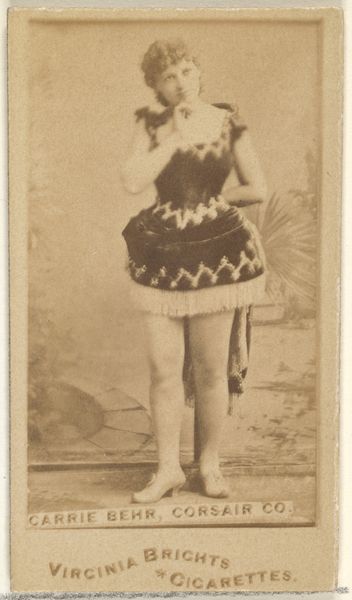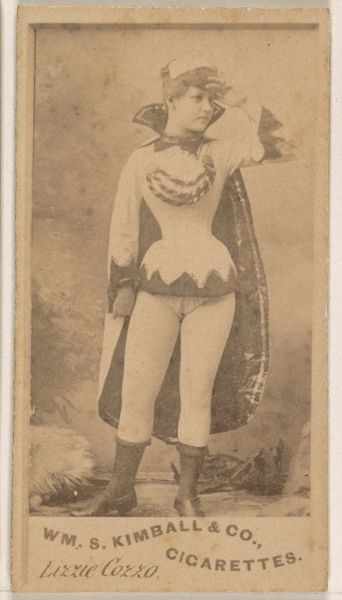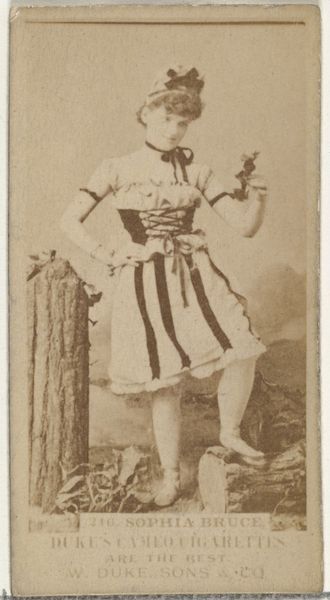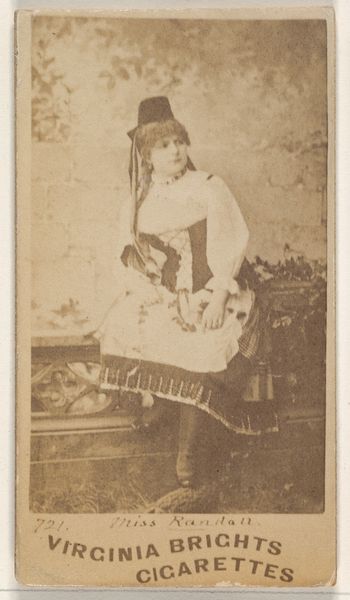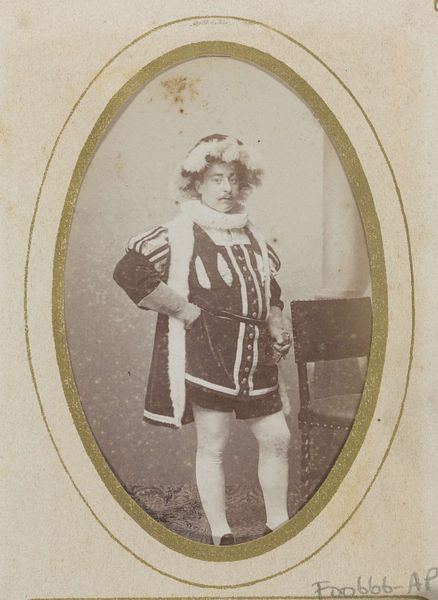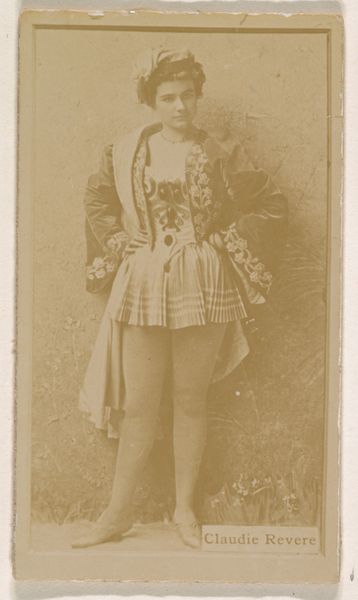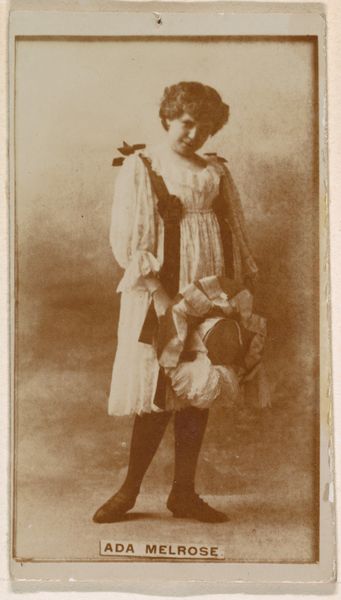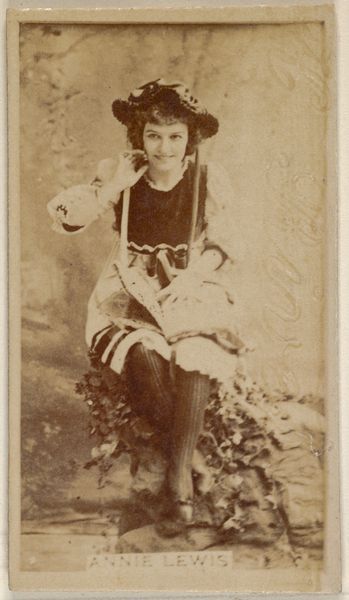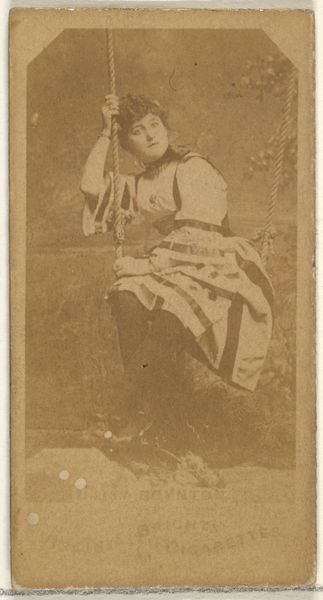
Portret van een jonge man in kostuum, aangeduid als J.B.A.H. van den Berg 1880 - 1883
0:00
0:00
photography
#
portrait
#
photography
#
19th century
#
academic-art
#
watercolor
Dimensions: height 83 mm, width 52 mm
Copyright: Rijks Museum: Open Domain
Editor: This is "Portret van een jonge man in kostuum, aangeduid als J.B.A.H. van den Berg" or "Portrait of a young man in costume, referred to as J.B.A.H. van den Berg" by Jan Goedeljee, dated between 1880 and 1883, made with photography. I’m struck by the theatricality of it. He's dressed in this elaborate costume, and the pose feels very staged. What do you see in this piece? Curator: I see a commentary on identity and performance, deeply rooted in the social conventions of the late 19th century. This image plays with the boundaries of masculinity, perhaps even poking at the rigid expectations placed on young men within that social structure. The costume itself signifies a conscious adoption of a persona. What does this assumed identity tell us about the sitter’s own desires or perhaps, societal pressures? Editor: So, you're saying the act of dressing up itself is significant, not just the historical context of the costume? Curator: Precisely. Think about the accessibility of photography at this time. It was becoming more widespread, offering individuals a new way to self-represent. How does this staged photograph, where a young man actively chooses to portray someone else, speak to broader issues of agency and self-definition within a rapidly modernizing world? The watercolor finish gives a soft and vulnerable feeling; does that contradict, complement, or challenge your feelings regarding the artwork? Editor: That’s a really interesting point about agency. I hadn’t considered how new the medium was and how much control the sitter might have wanted. It’s like he’s experimenting with different versions of himself. The fact it's watercolor feels more emotional now. Curator: Exactly! Considering the constraints placed on individuals during this period is paramount. By analyzing the visual vocabulary, we can illuminate a compelling interplay between art, identity, and socio-political forces. Editor: This conversation gave me a totally different understanding of this portrait and the context of the time! Curator: Agreed. By examining artwork through an intersectional lens, we uncover a deeper, richer understanding of ourselves and the world around us.
Comments
No comments
Be the first to comment and join the conversation on the ultimate creative platform.
